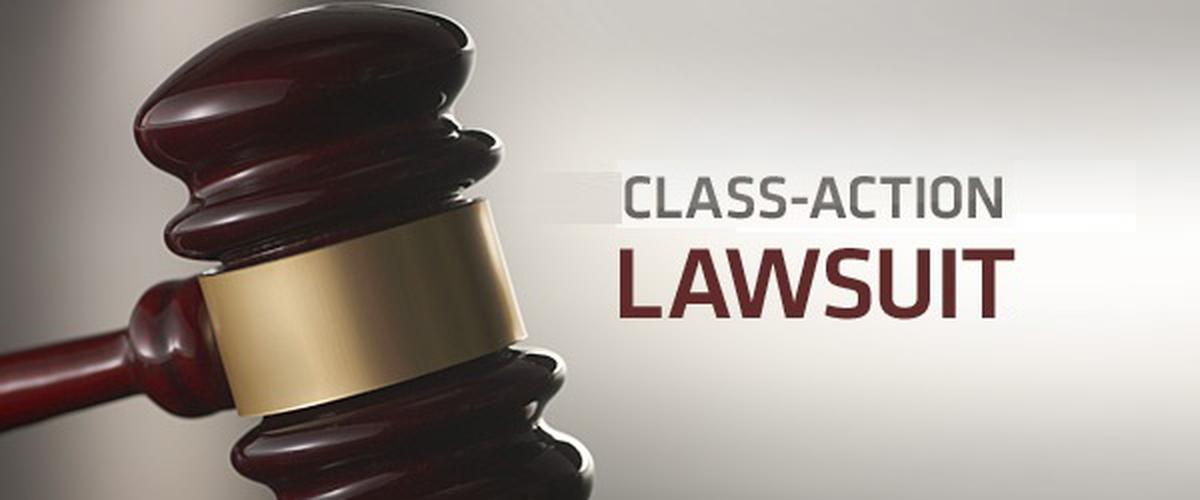Navigating the BioVie Class Action Lawsuit: What You Need to Know
Navigating the BioVie Class Action Lawsuit: What You Need to Know
Blog Article
Checking Out Course Action Claims: What You Need to Know
Course action lawsuits have actually become significantly widespread in today's legal landscape, with people joining pressures to seek remedy against companies and companies. In this conversation, we will discover the ins and outs of course action claims, dropping light on their definition, the demands for filing, and the prospective advantages and drawbacks entailed.
The Definition of Class Activity Lawsuits
A course activity legal action is a lawful activity submitted by a team of people that have comparable insurance claims against an accused. Class action claims are normally brought when the number of prospective plaintiffs is too huge for specific claims to be functional.
Among the crucial aspects of a class action legal action is that the lead complainant, additionally called the course representative, stands for the passions of all the class members. The court selects the lead complainant based upon their capacity to rather and adequately represent the class. The lead plaintiff functions very closely with the class activity lawyer to build a solid situation and seek payment or other solutions in support of the entire course.
In order for a class activity suit to proceed, the court has to license the course. This means that the court establishes that the claim meets particular demands, such as numerosity (a huge sufficient variety of class participants), commonality (usual concerns of regulation or truth), typicality (the cases of the lead plaintiff are regular of the class), and competence of representation (the lead complainant and class guidance are qualified of representing the course's interests) As soon as the class is accredited, the lawsuit can progress, and any judgment or negotiation got to will apply to all course members unless they select to opt-out.
Course action claims offer a vital objective in offering accessibility to justice for individuals who might not have the resources to pursue their insurance claims individually. They likewise advertise efficiency in the legal system by settling similar insurance claims right into a solitary action, decreasing the worry on both the court and the parties involved.
Demands for Submitting a Class Activity Legal Action

One more demand is that the class must be sufficiently various. The precise number of class members required might differ relying on the territory and the nature of the situation. Nevertheless, it is usually anticipated that the course should be big enough that joining all the specific complainants right into a single lawsuit is more efficient than having numerous different legal actions.
In addition, it is essential that the course agent, who is the individual or entity bringing the legal action on behalf of the class, has normal cases and defenses to those of the class members. The agent needs to additionally have the ability to properly and relatively represent the interests of the whole class.

Benefits and Drawbacks of Class Activity Lawsuits
Class activity claims provide both advantages and disadvantages for plaintiffs and offenders associated with the lawful process. On the one hand, one of the substantial advantages of class action legal actions is that they provide a affordable and efficient means for individuals with similar claims to go after justice jointly. By consolidating many similar instances right into one suit, course actions simplify the lawful procedure and save time and sources for both accuseds and plaintiffs.
One more advantage of class action suits is that they permit people with restricted sources to look for settlement for their problems. In cases where the prospective recovery is small, private suits might not be economically viable. Nevertheless, by joining pressures in a course activity, plaintiffs can merge their sources and increase their possibilities of obtaining a reasonable resolution.
Moreover, course activities can promote social adjustment by holding companies responsible for their actions. By bringing interest to widespread transgression or malfunctioning products, class activities can pressure firms to change their practices, enhance item safety find more information and security, or apply reforms.
Nonetheless, course actions also have disadvantages. One potential negative aspect is that private complainants may have restricted control over the litigation procedure and the ultimate result of the instance. The lead complainants and their lawyers normally make essential choices in behalf of the whole course, which may not constantly straighten with the individual interests of each course member.
Furthermore, course activities can be time-consuming and prolonged, often taking years to reach a resolution. The intricacy and size of these suits can cause hold-ups and prolonged lawsuits, which can be discouraging for both defendants and complainants looking for a timely resolution.
Actions Associated With a Course Activity Claim
The procedure of a course activity lawsuit normally begins with the recognition of a prospective course and the filing of a problem. Once a group of people that share similar cases versus a defendant is determined, the lead complainant, or course representative, submits a complaint in support of the entire class. This complaint details the claimed wrongdoing and looks for problems or various other relief for all participants of the course.
After the grievance is submitted, the court will figure out whether the situation satisfies the requirements for course accreditation. These demands typically consist of numerosity (a huge enough class), commonality (similar legal cases), typicality (the lead complainant's claims are depictive of the course), and adequacy of representation (the lead plaintiff and their attorney can properly represent the class's rate of interests)
If the court accredits the course, notification is given to all potential class participants, providing the chance to opt-out if they want to seek their very own individual insurance claims - BioVie class action her response lawsuit. If an enough variety of class participants remain, the case will certainly proceed to the exploration phase, where both sides collect evidence and info relevant to the insurance claims
Complying with discovery, the events might participate in settlement negotiations or proceed to trial. If the instance goes to trial and the class prevails, the court will determine the proper damages or alleviation to be granted to the course participants.
Current Site Course Activity Claims
With a strong understanding of the actions associated with a class activity claim, it is now vital to take a look at some recent landmark cases that have made a significant effect in the lawful landscape. Future FinTech class action lawsuit. These cases have not only shaped the way class activity legal actions are performed however have additionally produced changes in numerous industries
One such site situation is the Volkswagen emissions scandal, which led to the biggest course action negotiation in automobile background. In 2015, it was exposed that Volkswagen had installed software program in their automobiles to cheat discharges examinations. This deception influenced countless consumers worldwide, leading to a course activity suit. The settlement reached in 2016 amounted to approximately $15 billion, making up afflicted car owners and penalizing on Volkswagen.
An additional notable situation is the Johnson & Johnson talcum powder suit. Thousands of women filed claims against the company, declaring that their talcum powder items triggered ovarian cancer.
These current site cases show the power of course activity legal actions in holding corporations answerable for their actions and seeking justice for damaged people. They function as examples of exactly how class activity suits can produce considerable modifications and safeguard the rights of consumers.
Verdict
In conclusion, course activity legal actions are a legal system that permits a team of people to jointly look for justice for an usual complaint. Recognizing the demands and steps involved in submitting a course activity legal action is vital for people looking for to seek this legal avenue.
One of the key aspects of a class action lawsuit is that the lead complainant, additionally known as the class agent, represents the rate he said of interests of all the class members.In order for a course activity claim to proceed, the court needs to license the class. This implies that the court establishes that the lawsuit satisfies particular needs, such as numerosity (a huge adequate number of class members), commonness (usual questions of law or reality), typicality (the claims of the lead complainant are regular of the class), and competence of representation (the lead plaintiff and class advise are qualified of representing the class's interests) As soon as the class is accredited, the lawsuit can move ahead, and any type of judgment or negotiation reached will use to all class members unless they select to opt-out.
The procedure of a course action lawsuit normally starts with the recognition of a potential course and the filing of an issue.
Report this page